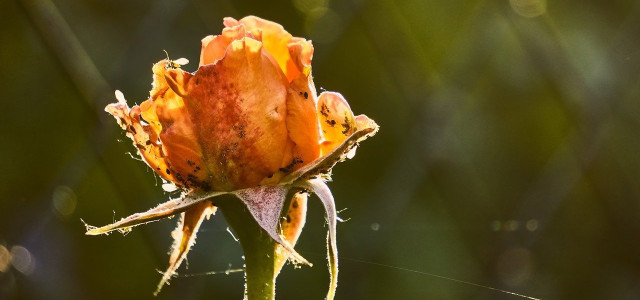If you’re a hobby gardener, sooner or later, you are likely to be faced with rose diseases and pests. We’ll give you an overview of the most common problems, and what to do about them.
Roses are indisputably and ubiquitously a favorite among hobby gardeners. But despite careful planting and proper care, even the most robust varietals are not completely disease-resistant. There are many types of rose diseases and rose pests that can become a problem. We’ll list the most common among them, and tell you what you can do to get rid of them.
Interested in eco-friendly garden solutions? Read Natural Pesticides: A Comprehensive Guide For Your Garden.
Rose Bush Diseases #1: Sooty Mold
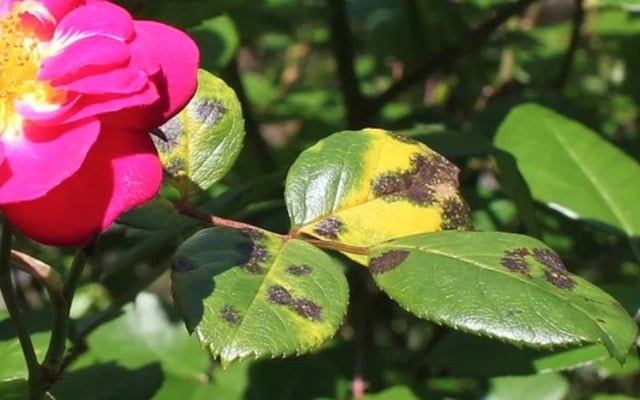
Sooty mold, Latin Diplocarpon rosae, is one of the most commonly occurring rose diseases. The fungus is very persistent and can cause quite a bit of damage, so if you start to notice the signs of this rose bush disease, it’s important to do something about it right away.
How can you tell if your roses are infected? Sooty mold causes brownish-black spots to appear on the leaves, which will eventually turn yellow and fall off. If you notice the signs of this rose disease, get a sharp knife and cut off the infected leaves. Afterwards, disinfect the knife to make sure you don’t spread the mold to any other plants.
Rose Diseases #2: Rose Rust
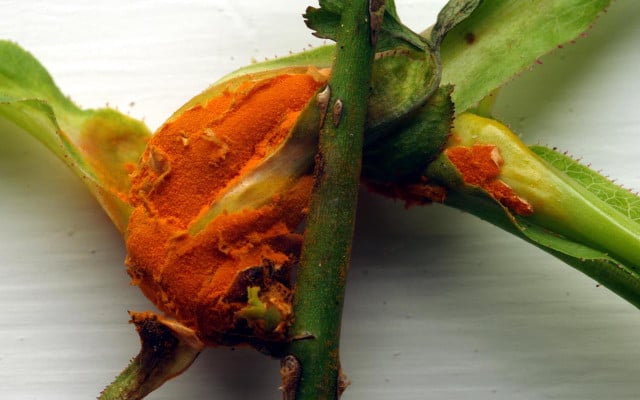


Another very common rose bush disease is rose rust. Roses grow well when the ground is very moist; so well that they can sometimes become overgrown. If the leaves are not properly aerated, rose rust can quickly take hold. To help prevent this, make sure you don’t plant rose bushes too close together, and regularly thin them out to prevent them from growing too thick.
As the name suggests, roses infected with this disease begin to show red-orange spots on their leaves. Use a sharp knife to remove the infected leaves as soon as possible, to prevent the fungus from spreading. Collect the removed leaves and throw them away: if you leave them on the ground, the fungus can reinfect the plant.
Rose Pests #3: Cicadas
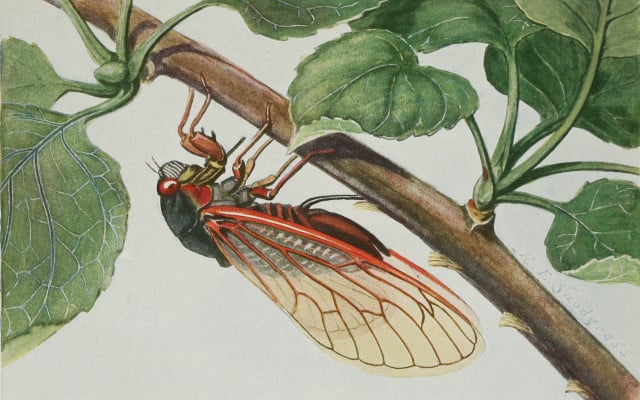


Unfortunately, roses have to contend not only with a range of diseases but with a number of rose pests. One of the most common perpetrators is the cicada. You can recognize an infestation by the white speckles on top of the leaves: on the undersides are the cicadas and their larvae.
Eventually, the cicada eggs hatch. The little greenish bugs are similar to grasshoppers in their appearance and survive by sucking the sap from the leaves of the rose bush.
You can help prevent cicadas from making your rose bush their new home by making it a point to let spiders, their natural predators, live in your garden. If you’d rather not do that, you can sprinkle a bit of neem powder on the plant in spring. You can buy neem powder in your local health food store, or online on Amazon**.
You might also enjoy: Are Praying Mantises Endangered? Facts & Easy Removal Tips
Rose Diseases #4: Powdery Mildew
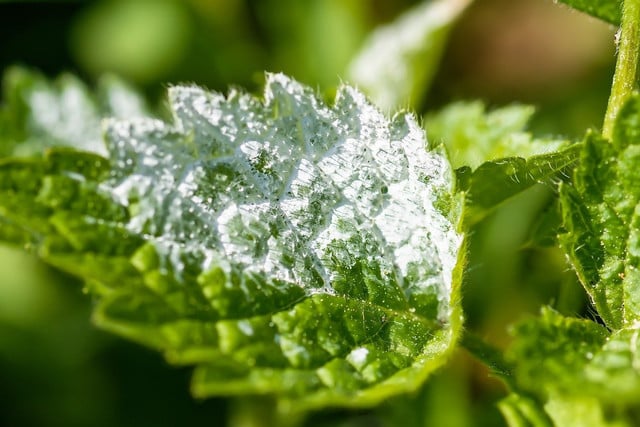


Powdery mildew is a fungal rose disease that is caused, in part, by soil that is too nitrogen-rich. It often becomes a problem starting in the warmer months.
You can recognize this disease by the telltale whitish, floury coating that it forms on the leaves, stems, and buds of your rose bush. The fungus weakens the entire plant, and in the case of severe infection, will cause the rose bush to lose its leaves.
Instead of resorting to a pesticide to fight the disease, first try cutting off the infected parts of the plant, and give it a chance to recover on its own. Pesticides may help get rid of insects, but they often hurt more than they help.
Tip: Check the composition of the fertilizer that you’re using: if it contains a high amount of nitrogen, trying using a different formula, to help prevent powdery mildew from growing.
If you do notice bugs living among your flowers, try using potassium soap to get rid of them.
Rose Pests #5: Rose Leaf Aphids
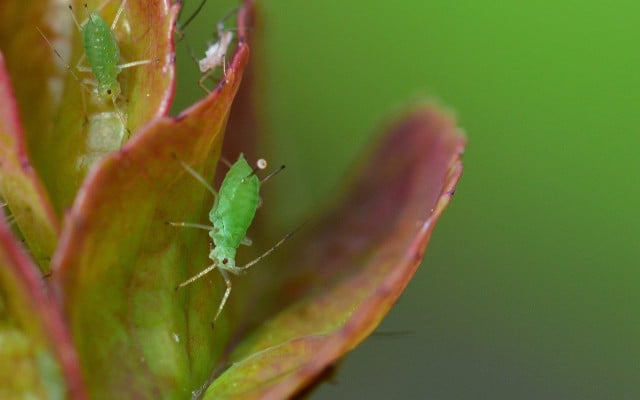


Yet another common rose pest is the rose aphid, or macrosiphum rosae. This species of aphid is usually three to four millimeters long and green. They sit on the young shoots, buds, and leaves, sucking the sap out of the plant. In addition, these rose pests secrete fluids that do further damage to the plant.
Aphids multiply rapidly, so you’ll need to act quickly to prevent them from taking over your entire rose bush. Add a few drops of neem oil to two cups of water, and use a spray bottle to apply to the liquid to your plant. This will cause the aphids to become inactive.
Tip: You can buy neem oil at your local health food store, or online at Amazon**.
Rose Pests #6: Rose Sawfly
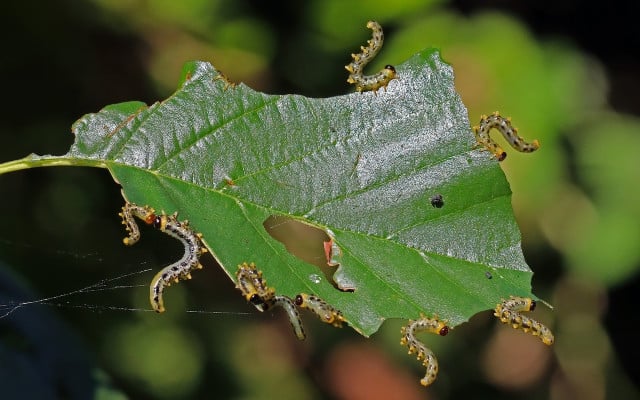


If you notice large holes in the leaves of your rose plant, your problem is likely to be a rose pest, not a rose disease. The rose sawfly is shiny, black, and about five millimeters long. This pest likes to lay its eggs on the underside of rose leaves, and when the larvae hatch, they proceed to eat their way through the leaves.
If you think your plant might be infested, spray the leaves of your rose bush with diluted neem oil to help get rid of the pests.
** Links to retailers marked with ** or underlined orange are partially partner links: If you buy here, you actively support Utopia.org, because we will receive a small part of the sales proceeds. More info.Do you like this post?






